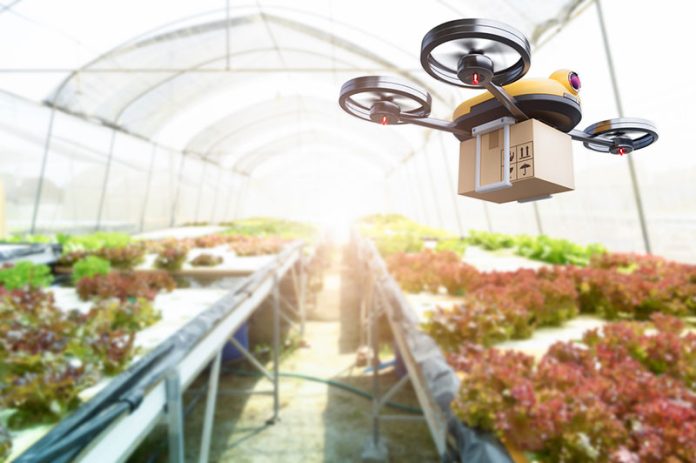As business owners try to innovate all their operations, aerial imaging is becoming the new trend for small businesses. They look for companies like fly guys drone services to effectuate cutting-edge technology and stay one step ahead of their competitors.
One of the latest technologies they want to commercially utilize for this purpose is the LiDAR drone. According to a survey, LiDAR drone’s market size will grow by USD 508 million by 2027 for commercial use.
But what is a LiDAR drone, and how does it help business growth? This article will give you all the answers related to LiDAR drones.
What is LiDAR Technology?
LiDAR (Light Detection and Ranging) is a detection system via light but follows the radar principle. The source sends light signals that hit the object and bounce back, providing useful data.
You can integrate LiDAR with other hardware like:
- Drones
- Helicopters
- Submarines
- Smart handheld devices
How Does a LiDAR Drone Work?
For aerial imaging, professional drone services equip these gadgets with a LiDAR sensor. In this way, the data can be easily and quickly accessed drone is controlled by either a pilot or remote control.
The LiDAR system attached to the drone scans objects’ space by sending out laser beams. LiDAR’s laser can penetrate or cut around debris and other obstacles, giving accurate results.
When the sensor releases a laser beam, it works like sonar and radar object detection. However, the Sonar system uses sound waves, and the radar system uses radio waves to map things. On the other hand, LiDAR uses light rays (laser beams) to measure distance and dimensions.
It does so with the help of Pulse and Return.
- The laser sent out from the LiDAR system to the ground is called Pulse.
- The reflected light which comes back to the LiDAR system is called Return.
LiDAR Drone Measurement
Although the laser light by a LiDAR drone travels in a straight line, it does measure dimension plus distance of stuff. How?
There are four major steps behind the working of a drone LiDAR:
1. LiDAR Scanning
First, the drone activates the LiDAR system, which sends moving laser beams to the earth. The laser keeps moving as the drone flies.
Besides, there are two types of lights LiDAR sensor uses:
- Greenlight (532 nm)
- Near-infrared light (1,064 nm)
These two lights can easily penetrate through the obstacle and reflect from whatever the surface is.
2. GPS Receiver
You need a GPS receiver with LiDAR technology. The GPS receiver calculates the drone’s altitude and determines its position in the air. With the help of a GPS receiver, we can find the reflection spots on the ground.
LiDAR technology featuring a GPS receiver helps in geo-positioning, showing the exact location where the image is taken.
3. Inertial Measurement Unit (IMU)
IMU helps track the drone’s aerial movements, which might affect the actual reading by the LiDAR system.
The responsibility of IMU is to evaluate the actual elevation of the drone to counter every miscalculation whatsoever.
4. LiDAR Computer
After gathering the aerial imaging data, you need a system to process it. LiDAR has its own computer, which can process the data efficiently and maintain a LiDAR database.
The system sends all the data collected by the aerial LiDAR to the computer. Therefore, no calculation can take place without a computer.
How Does LiDAR Measure Height?
The aerial LiDAR system uses the time to measure the height and eventually distance of the drone from the object underneath.
The height measurement is the time the “Pulse” takes to return to the system as “Return.”
But how is all this information useful? Let’s find out.
How Can LiDar Help Grow Your Business
Here are some ways you can utilize LiDAR technology for business growth:
Monitoring and Surveillance
By using aerial LiDAR, you can monitor the progress of your ongoing project from different aerial angles. However, there are some spots where it’s dangerous for humans to capture shots. That’s when the drone LiDAR system comes into play.
Aerial photography has also become a business itself.
Therefore, you just have to get yourself the latest LiDAR drone or get assistance from a drone services company if you don’t want to face technicalities.
These services might include
- Thermal imaging and video
- Timelapse photography
- Panoramic shots
Track Construction Progress
As drones in construction are widely used, they can also provide aerial imagery for better progress monitoring. Aerial LiDAR has totally replaced reaching to the top of an under-construction building. Instead, now you can fly the drone, take aerial photographs, and see what’s going on from the top view without sending a worker up there.
Keep Stakeholders Updated at All Times
Communication in the business is a necessity, not a choice. You have to keep your clientele posted about the new offerings. For this purpose, you can utilize LiDAR technology to send them with latest updates.
For suppliers and manufacturers, aerial LiDAR is an efficient way to track the performance of different production stages. It helps them in efficient and timely reporting as they can send aerial images showing the status of clients’ orders.
As a result, clients never have to pay in-person visits to see which production stage their orders are going through.
Survey and Inspection
Aerial LiDAR can survey residential and commercial properties and give better insights before making an investment decision. Moreover, this technique saves you time and money because it’s
- Fast
- Reliable
- Budget-friendly
Drones for aerial photography can also inspect hazardous places where humans shouldn’t go.
FAQs
At What Wavelength Does LiDAR Sensor Work?
You will find 905 nanometers (nm) and 1,550 nm wavelength ranges in the modern LiDAR sensors. So you can attach a LiDAR sensor to a drone and make the best of aerial imaging.
Is LiDAR Sensor Harmful to Humans?
Although some experts say that direct exposure to LiDAR laser can harm human eyesight, all commercial LiDAR sensors conform to the Class 1 eye-safe (IEC 60825-1:2014) standard. That means these laser products are safe to use.
What’s the Purpose of IMU (Inertial Measurement Unit) in the Aerial LiDAR?
As there is turbulence while flying a drone, a pilot tries to keep the flight as stable as possible. IMU considers the effects of the aerial disturbance and measures the drone’s altitude accordingly.
By doing this, you can get more accurate data from the LiDAR sensor.
Conclusion
The LiDAR system doesn’t only work from drones but from ground and space as well. The most commonly available airborne data is by aerial LiDAR, which makes it highly useful for many businesses.
Therefore, equip your business with a LiDAR drone and go aerial with the latest technology.




































































